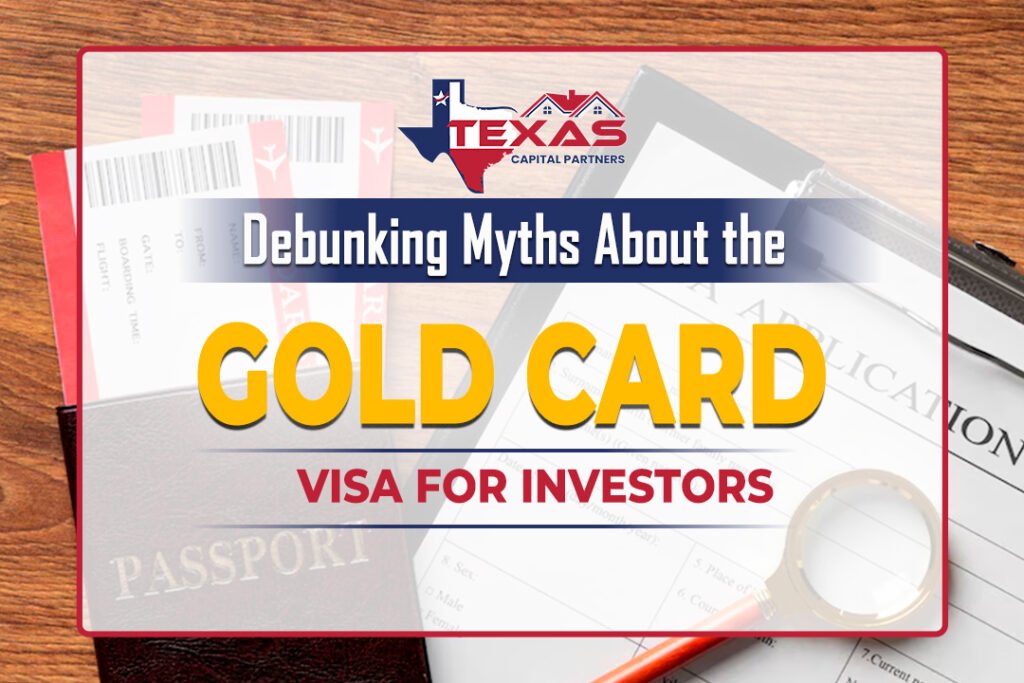The U.S. Gold Card Visa has recently emerged as a major talking point in the realm of investment-based immigration. Introduced by President Trump, this program is designed to attract high-net-worth individuals willing to invest $5 million into the U.S. economy in exchange for permanent residency and a pathway to citizenship. Despite its promise, misconceptions about the Gold Card Visa abound. In this blog, we aim to debunk some of these myths and provide clarity for prospective investors.
Myth 1: The Gold Card Visa Is Just Another EB-5 Program
Reality: The Gold Card Visa is fundamentally different from the EB-5 program. While the EB-5 requires a minimum investment of $800,000 and mandates job creation (at least ten jobs), the Gold Card Visa simplifies the process by focusing solely on a $5 million investment without job creation requirements. This streamlined approach eliminates many of the complexities and delays associated with EB-5 applications, making it an attractive alternative for investors seeking faster residency approval24.
Myth 2: Only Billionaires Can Afford the Gold Card Visa
Reality: While the $5 million investment threshold is significant, it is not exclusively for billionaires. Many high-net-worth individuals view this as a strategic opportunity to secure U.S. residency while diversifying their investments. The flexibility in investment options—ranging from government bonds to real estate and infrastructure projects—allows investors to align their contributions with their financial goals4.
Myth 3: Golden Visas Are Disappearing
Reality: Contrary to popular belief, investment-based visa programs like the Gold Card are not disappearing; they are evolving. While some countries have tightened requirements or shifted focus (e.g., Portugal’s Golden Visa moving toward private equity funds), new programs like the U.S. Gold Card are emerging as viable alternatives. These programs are designed to meet economic and political goals while remaining attractive to global investors35.
Myth 4: The Gold Card Visa Is Just a Tax Evasion Tool
Reality: The Gold Card Visa is not intended for tax evasion but rather for economic growth and global mobility. However, taxation remains a critical consideration for investors. U.S. tax laws impose global taxation on residents, which could include income tax on worldwide earnings and estate tax exposure of up to 40%. There is speculation that Congress may introduce provisions to limit tax liability to U.S.-sourced income for Gold Card holders, potentially making it more tax-friendly2.
Myth 5: The Investment Is Too Risky
Reality: Like any investment, risks exist but can be mitigated through careful planning and professional advice. The Gold Card Visa allows investments in secure sectors such as government-approved projects, infrastructure, or real estate developments, ensuring transparency and oversight. Partnering with reputable advisors can help investors navigate risks effectively34.
Benefits of the Gold Card Visa
Beyond dispelling myths, it’s important to highlight the advantages of this program:
- Residency for Families: Includes spouses and children under 21.
- Business Opportunities: Access to one of the world’s largest markets.
- Education & Healthcare: Top-tier institutions and medical facilities.
- Pathway to Citizenship: Potential eligibility after meeting residency requirements45.
Conclusion
The U.S. Gold Card Visa represents a groundbreaking opportunity for wealthy investors seeking residency in the United States. While myths may cloud its perception, understanding its unique features and benefits can help investors make informed decisions. Whether you’re looking for global mobility, business expansion, or family security, this visa program could be your gateway to achieving your American dream.
For personalized advice or assistance with your application process, consult trusted financial and immigration advisors who can guide you through every step of this transformative journey.



